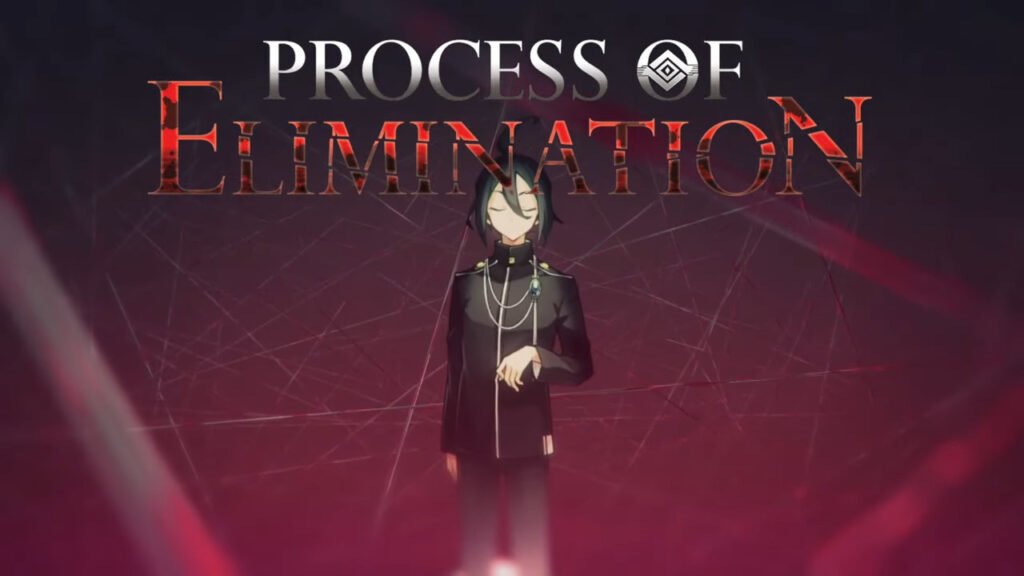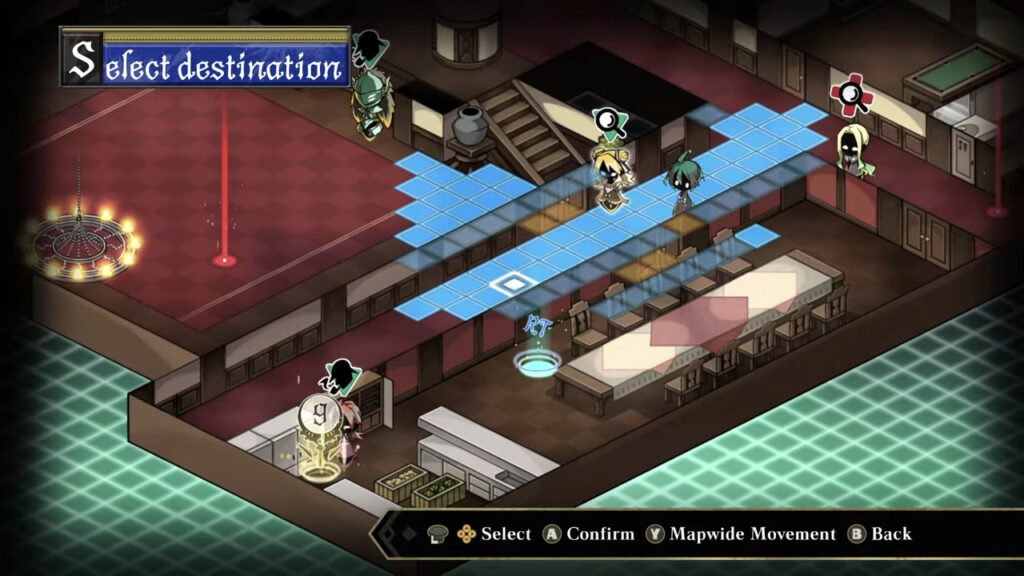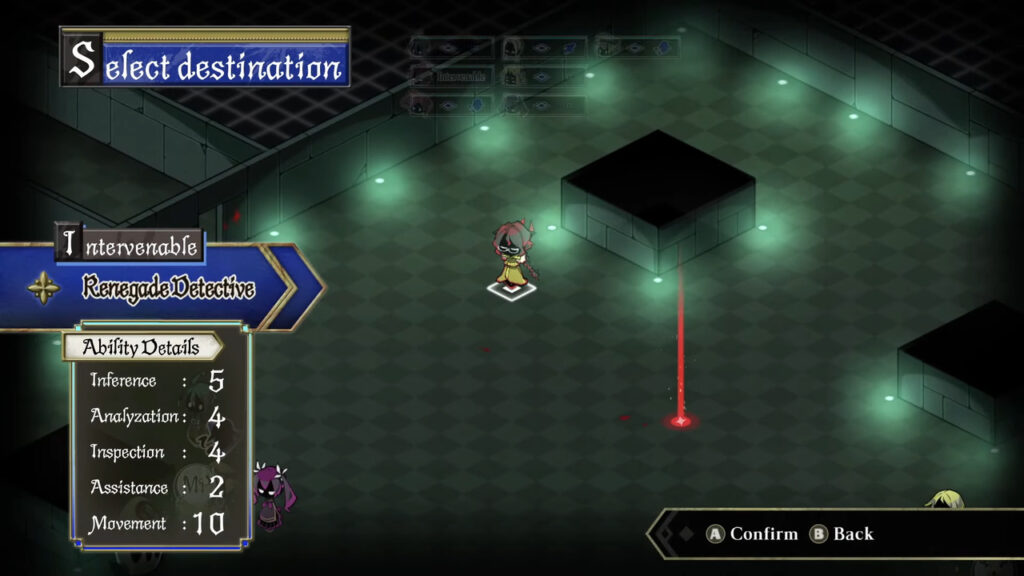
Developer: Nippon Ichi Software
Publisher: NIS America
Platform: Switch, PS4
Tested on: Switch
Process of Elimination – Review
To the casual observer, Process of Elimination might seem like just another title in NIS America’s incredibly packed release schedule on the Switch, which included a whopping seven big releases this year alone. However, all of those other releases were either remakes or sequels. Process of Elimination has the honor of being the first completely new IP launched by NIS since last year’s Yurukill. Not just that, but the game also seemingly wants to position itself against the beloved Danganropa series. Can Nippon Ichi Software’s newest title compete with Spike Chunsoft’s series of classic murder mystery games?
Story
Wasting no time getting to the point, Process of Elimination immediately presents players with a choice. Two masked characters are seen on screen, each defined by a single character trait, and it’s up to the player to decide which one lives and which one dies. This opening scene sets the tone for the story that is to follow. The execution of this first victim, and the majority of those that follow, are orchestrated by the Quartering Duke. This mysterious and sadistic killer streams his executions live and lets his viewers vote on the fate of his targets. His modus operandi has also inspired a slew of copycat killers, so it’s essential that the Quartering Duke is found and put to justice, so that law and order may return to society. Given how elusive the villain is, an army of detectives is put on the case, and as it happens, our protagonist, high school student and aspiring detective Wato, happens to be among these sleuths. Together with the other detectives, Wato is sent to a mysterious remote island to uncover the truth.
Feeling decidedly less character-driven than similar stories, Process of Elimination instead focuses on putting forth some interesting philosophical ideas. The cast of detectives is colorful, yet one-dimensional, which is exemplified by the codenames that they adopt. These describe a single character trait, like “techie detective” or “workaholic detective”, with Wato himself assigned the pseudonym “incompetent detective”. This approach means that you’ll instantly understand what a character is about, allowing for some more room when it comes to pacing. It’s in the questions that Process of Elimination raises that the strength of the story lies, as the writing itself often feels flat and the mysteries are telegraphed or over-explained. We wouldn’t go as far as to say that Process of Elimination’s writing is outright bad, but the main story relies a bit too much on familiar tropes that we’ve seen executed much better elsewhere.
Graphics
The aforementioned one-dimensional character personalities are further emphasized through the art direction. The game’s various cast members are easily identifiable at a glance, and the manga-inspired art style provides Process of Elimination with a distinct yet familiar visual identity. The character art is definitely one of the strong suits, although the game’s stylistic choices fall flat elsewhere. Assets used during investigations lack detail or look low-res, as if they were remnants from a scrapped 3DS game. Environments and CG art fare a little better in general, although these lack cohesion. Perhaps the game looks a little better on PS4, but on the Switch, Process of Elimination is a mixed bag in terms of graphics.
Sound
Unlike Process of Elimination’s visuals, the game’s soundscape cannot be attributed with a lack of cohesion. Everything about the game’s audio is consistent. Unfortunately, however, it’s also very, very dull. The game features voice acting, but only in Japanese, with no English dub available. Now, while our Japanese isn’t up to snuff, we still found it difficult to match the audible character emotions with the text that we read on screen. Perhaps things were lost in translation, but the voice cast seemed to phone it in, seeming bored that yet another murder victim was found. That same sense of dullness applies to the music as well, which attempts to paint a mysterious atmosphere but ends up being bland and utterly forgettable.
Gameplay
Occupying a gameplay niche similar to that of the AI: The Somnium Files and Danganronpa series, Process of Elimination offers a blend of visual novel-style storytelling and puzzle-like mystery gameplay. The game deviates from the traditional point-and-click adventure formula that those aforementioned siblings employ, however, with the interactive elements taking on the form of a Clue-like board game instead. The investigation half of Process of Elimination takes place on an isometric grid, and you’ll need to drag your characters across it, piecing together evidence and insights, using their unique skills. This is done against a turn limit. It’s a unique take on the genre that works surprisingly well, and it forces the player to carefully consider their actions as the turn limit is very strict. With no ‘undo’ button present either, this makes Process of Elimination’s investigation phase feel like a tense affair, and it truly is one of the game’s highlights.
In fact, these investigation segments justify a lot of Process of Elimination’s otherwise more questionable design choices. In other games, having a cast this large would have felt too much, but here the unique character traits of each detective ensures that there is plenty of variety and that the game never feels stale. Often, detectives need to team up in order to figure out specific clues, and there are instances where you really need to think outside of the box in order to attain success. After gathering your evidence, you’re then presented with a series of questions about the mystery you’re trying to crack, and you are scored in accordance with how many of these you get right, with a coveted S-rank rewarding you should you get everything right on the first try.
That said, Process of Elimination gets a lot right with its gameplay, but not quite everything. Key information and clues are occasionally buried deep in the in-game database. There isn’t anything necessarily inherently wrong with that, but the game doesn’t point you in the direction of character bios and so these clues are easily missed. This can be a bit frustrating when solving a case relies on this, especially because most of these clues could have been seamlessly integrated into the story. We also ran into a bug when it came to saving the game during dialogue scenes. While we could access the save menu at any point, actually trying to save the game yielded no result. This doesn’t necessarily affect the game itself, but it’s frustrating that you cannot simply save in the middle of a lengthy section of dialogue so that you can take a break and play something else. Hopefully this is something that will get patched down the line.
Our playthrough of Process of Elimination clocked in at around 24 hours, and that included having to restart some of the game’s trickier investigation segments. Despite the game’s lacking soundscape and subpar voice work, there was never a dull moment, even if some of the twists and turns were predictable. That said, just like most other visual novel/mystery game hybrids, Process of Elimination does lack replay value. Even aiming to obtain the S-ranks is not enough to warrant going through the motions again. This does mean that the $39.99 price tag feels a tad high, especially with Danganronpa Decadence and the Ace Attorney Trilogy occupying the same price bracket while these offer a bundle of games instead. If you’ve played through those and are looking for a new title to scratch that particular itch, then Process of Elimination is a viable option, but it shouldn’t be on the top of your list.
Conclusion
A conceptually interesting game in theory, Process of Elimination ends up being a mixed bag instead. The game’s unique selling point, its investigation mechanics, set it apart from its competitors, and the overarching story is filled with twists and turns, ensuring there isn’t a dull moment to be found here. However, the characters lack fleshed-out personalities, and the lackluster audio and inconsistent visuals hurt the overall appeal. The game plays things a bit too safe with tropes that we’ve seen done before elsewhere and in this regard, some of the supposedly shocking reveals are clear from the get-go. Ultimately, Process of Elimination has enough to offer to keep it afloat, but not enough to make it a must-have title.
Process of Elimination - Review,









No Comments